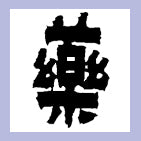How to Choose between Shenqi Jiangtang Pian and Jinqi Jiangtang Pian
I. Differences in Ingredients
| Drug |
Main Ingredients |
Ingredient Characteristics |
| Shenqi Jiangtang Pian |
Ginseng, Astragalus, Chinese Yam, Rehmannia, Lycium barbarum, Schisandra, Rubus chingii, etc. |
Focuses on nourishing qi and yin, tonifying the spleen and kidneys, with multiple herbs synergizing to regulate metabolism |
| Jinqi Jiangtang Pian |
Coptis, Astragalus, Honeysuckle |
Emphasizes clearing heat, drying dampness, purging fire, and detoxifying, while also nourishing qi and yin |
II. Efficacy and Actions
| Drug |
Indications |
Core Efficacy |
Special Actions |
| Shenqi Jiangtang Pian |
Type 2 diabetes, particularly suitable for qi-yin deficiency syndrome |
Replenishes qi and nourishes yin, tonifies the spleen and kidneys, and assists in lowering fasting and postprandial blood glucose |
Protects cardiovascular system, improves antioxidant capacity, but contraindicated for those with excess heat syndrome |
| Jinqi Jiangtang Pian |
Mild to moderate non-insulin-dependent diabetes mellitus, targeting qi deficiency with internal heat (e.g., thirst, polyphagia, fatigue) |
Regulates blood glucose, improves insulin resistance, protects pancreatic beta-cell function |
Assists in preventing diabetic complications (e.g., nephropathy, retinopathy) |
III. Dosage and Administration
| Drug |
Method of Administration |
Dosage |
Treatment Course |
| Shenqi Jiangtang Pian |
Oral |
3 tablets each time, 3 times daily (may increase to 8 tablets per dose for severe symptoms) |
1 month as one treatment course |
| Jinqi Jiangtang Pian |
Taken half an hour before meals |
7-10 tablets each time, 3 times daily |
2 months as one treatment course (or as directed by a physician) |
IV. Precautions and Contraindications
| Drug |
Contraindicated Populations |
Dietary Restrictions |
Other Precautions |
| Shenqi Jiangtang Pian |
Allergic individuals, those with excess heat syndrome, pregnant women (use with caution) |
Avoid alcohol, tobacco, greasy, spicy foods |
Cannot be used as the primary antidiabetic agent; blood glucose monitoring is required |
| Jinqi Jiangtang Pian |
Individuals with yin-yang deficiency diabetes, severe type 2 diabetes |
Avoid greasy, spicy foods, alcohol, and tobacco |
Avoid prolonged mental stress; combine with diet and exercise; monitor blood glucose when used with other medications |
V. Side Effects and Adverse Reactions
| Drug |
Common Side Effects |
Severe Reactions |
| Shenqi Jiangtang Pian |
Rash, gastrointestinal discomfort (nausea, diarrhea), palpitations, abnormal liver function |
Prolonged use may cause hypoglycemia (e.g., sweating, tremors, coma) |
| Jinqi Jiangtang Pian |
Hypoglycemia, gastrointestinal discomfort (nausea, vomiting), rash, edema |
Central nervous system disturbances (e.g., headache, dizziness, seizures) |
Summary: How to Choose?
-
Differentiation and Selection:
- For qi-yin deficiency diabetes (accompanied by fatigue, dry mouth, soreness of the waist and knees), prefer Shenqi Jiangtang Pian.

- For qi deficiency with internal heat diabetes (accompanied by thirst, polyphagia, easy hunger), consider Jinqi Jiangtang Pian.

-
Complications and Contraindications:
- Jinqi Jiangtang Pian is contraindicated in severe diabetes or yin-yang deficiency.
- Shenqi Jiangtang Pian is contraindicated in those with excess heat syndrome.
-
Combination Therapy:
- Both can assist in lowering blood glucose, but blood glucose monitoring is required to avoid hypoglycemia when used with Western antidiabetic drugs.
It is recommended to use these medications under the guidance of a physician. Inform your doctor of your symptoms and medical history before use to ensure safety and effectiveness.


